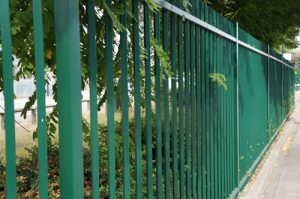 A look at the implementation of a new assessment and planning policy by Peter Jackson, Managing Director, Jacksons Fencing
A look at the implementation of a new assessment and planning policy by Peter Jackson, Managing Director, Jacksons Fencing
Recently Manchester City Council took a step in the right direction by implementing ‘Martyn’s Law’. The new policy follows the Manchester Arena bombing in 2017 and is named after one of the victims, Martyn Hett. It introduces five new requirements for licensing venues, ensuring they conduct vulnerability assessments and have a counter-terror plan in place. They are listed as:
- A requirement that spaces and places to which the public have access engage with freely available counter-terrorism advice and training.
- A requirement for those places to conduct vulnerability assessments of their operating places and spaces.
- A requirement for those places to mitigate the risks created by the vulnerabilities.
- A requirement for those places to have a counter-terrorism plan.
- A requirement for local authorities to plan for the threat of terrorism.
Having advocated these measures for years, we are pleased to see the first steps of local government taking more effective action and implementing a common-sense security law. A successful interpretation of the new law will rest on thorough assessment and monitoring by local bodies and industry experts, understanding the local threat context and having a knowledge of the most effective measures for each individual situation.
Assessing the threats
The first step in integrating security for public venues is to carry out a full-scale risk assessment, identifying any potential hazards and possible design flaws. This includes site considerations such as location, its day-to-day usage and topography.
It’s important to consider the types of buildings in the area and identify any high-risk sites nearby, as these will have a direct impact on the planning process, potential threats and overall security of the area. Establishing how the space will be used, who will have access and how access is controlled are also crucial parts of a standard risk assessment.
Importantly, an assessment will highlight an area’s weak points, from poor traffic management, unmonitored vehicle access control or blast stand-off distances. By painting a picture of how these weak points can be exploited, specifiers and planners can design against potential methods of attack.
It’s not just high-profile terror attacks that authorities and businesses need to consider. Criminal activity and opportunist lone-wolf attacks should also be planned for. Analysing the local threat context and emergency service response times can help inform security decisions. A venue in a neighbourhood reporting high levels of burglary should ensure they have effective detection capabilities, removing blind spots, employing CCTV or maximising the attack time needed to break into an area and thus increasing the likelihood of preventing intrusion.
Once an assessment has been carried out and potential risks identified, it’s possible to design out threats. Well thought out design can play a pivotal role in security. The next step is to ensure appropriate measures are implemented according to the situation. This can include improving the physical security of the buildings themselves and also incorporating crime prevention techniques into the actual layout and landscape of the surroundings. For example, if an assessment indicates the venue is vulnerable to vehicle attack, then the threat can be mitigated by implementing traffic calming measures and vehicle security barriers. Street furniture (speed bumps, bollards etc.) or chicanes will prevent vehicles reaching dangerous speeds or even getting into the space at all.
Intelligent, holistic design can help prevent or deter security breaches in subtle ways that will be barely noticeable to residents. Busy urban spaces can be secured against risks and attacks without being turned into a fortress. A good model of this is in place at Arsenal FC’s Emirates Stadium:
On match day the venue can expect crowds of up to 65,000. A vehicle attack could result in a catastrophic loss of life. However, between the road and the pedestrianised area is a sculpture with huge letters spelling ‘ARSENAL’. These are strong enough to stop a vehicle in its tracks, preventing it from reaching the crowds. In other areas large steel cannons, the club’s symbol, also greatly reduce the chance of hostile vehicles gaining access.
Taking inspiration
The UK government has already indicated its support of Martyn’s Law, a promising sign of things to come. While legislators and policymakers debate the new licensing rules and work on implementing them throughout the country, private businesses and venues should not passively watch on. Security breaches can risk lives and cause serious commercial damage. Venue manager and security specifiers should take the initiative and start implementing effective strategies today.


